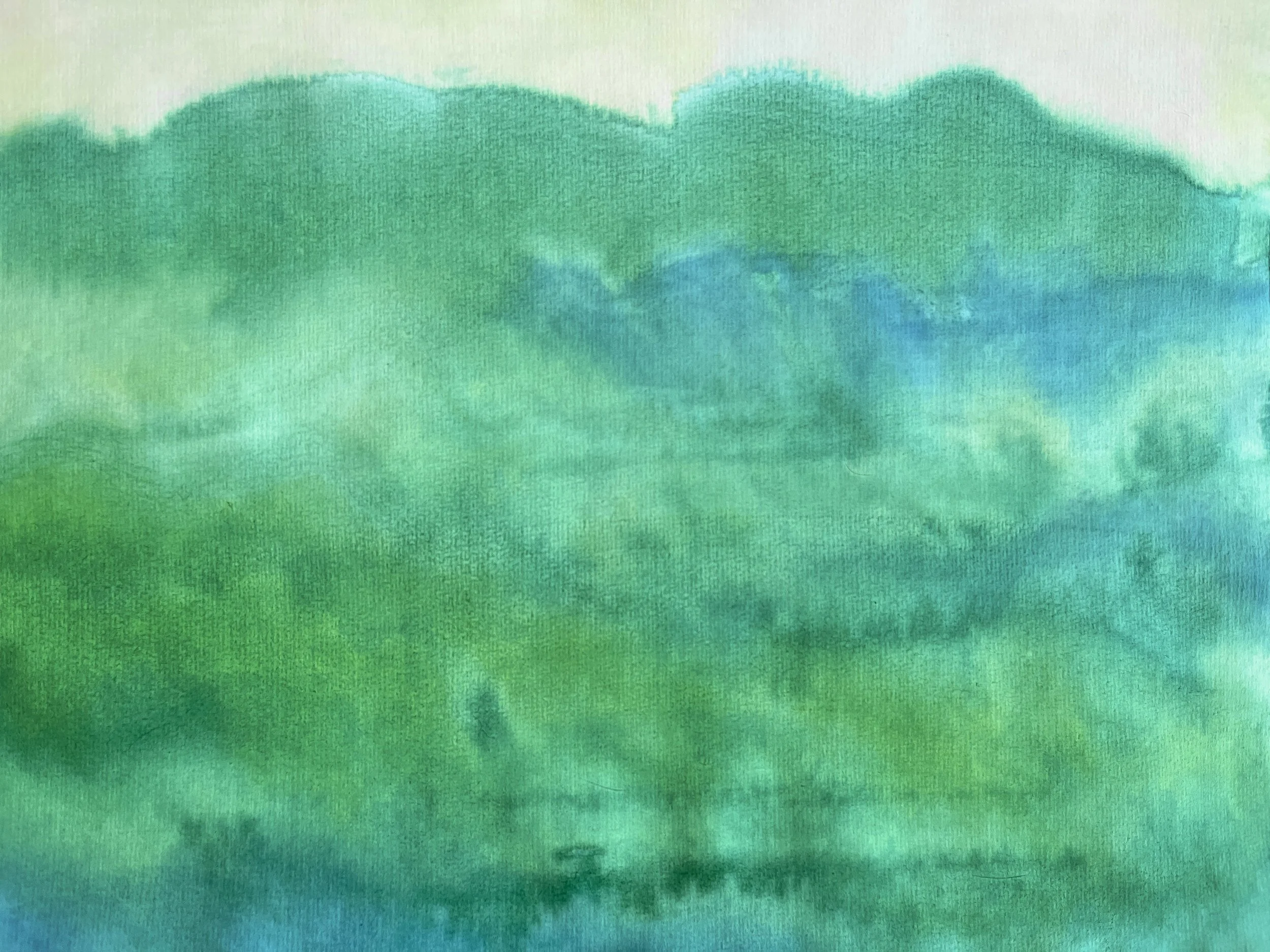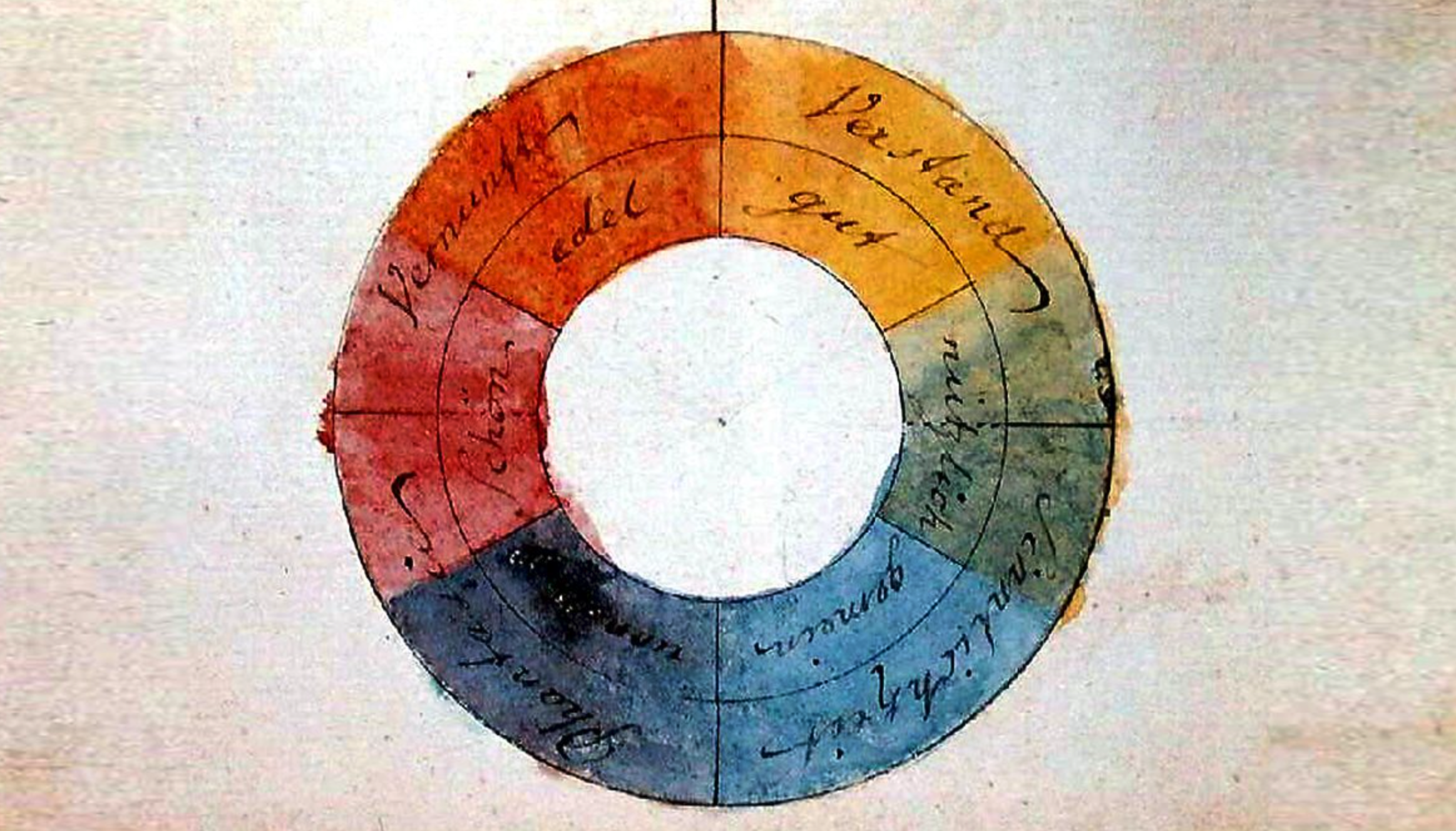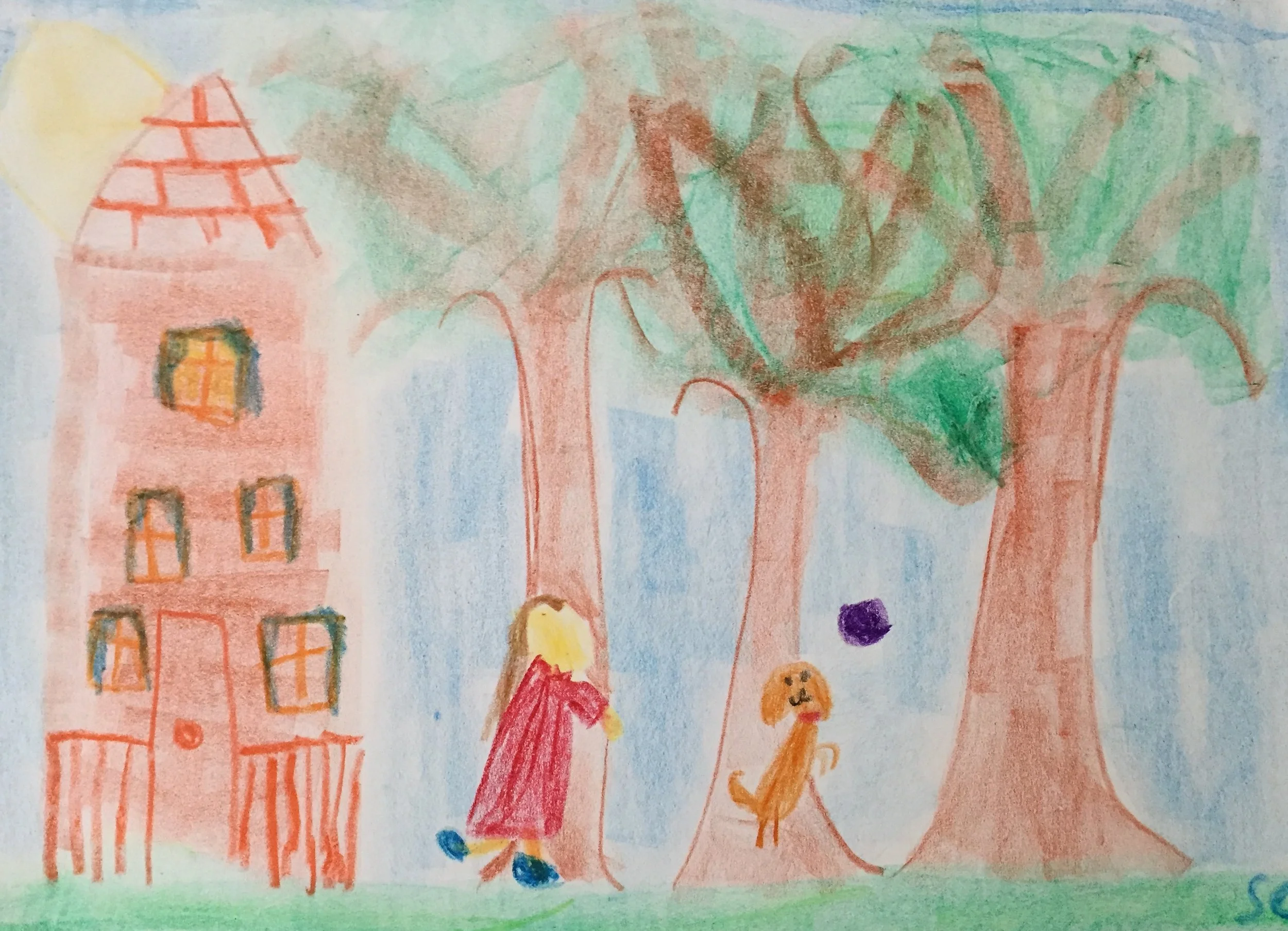Colors in Conversation
Building and maintaining relationships with others is the work of human life. The quality and flexibility of our social interactions reveals our ability to engage in the world at many levels. Our resilience depends on our ability to ask for help, and our success, at whatever level we are seeking, requires that we develop stable and supportive connections with like-minded individuals.
Relationality is the soul process and activity of fostering relationships and developing them over time. We arrive at an understanding that relationships change and develop. They require different things from us at different stages, to keep them stable and mutually rewarding.
Dreaming Green
Here in Philadelphia, Pennsylvania, there is a layer of snow on the ground and the thermometer reads in the teens and I am planning to paint today. When the world outside is not so welcoming, what better way to spend the day than turning inward and contemplating the world of color.
Since I started my work with color, there are some painting days when I am only interested in working with one hue. In this way, I reacquaint myself with their qualities and relationships and can more easily integrate them into my other work. Today is one of those days.
Today I chose green. Why green? I am not sure, maybe because I am thinking of summer days and grassy hills and gardens. Maybe I want to feel the growing forces of life that move and shape our world. But mostly it is a feeling of inner contentment. Green is a color of balance. In Goethe’s color wheel, it rests in the well between yellow, bright and shining, and blue, deep and receding. Green lives in the middle, between lightness and darkness.
Experiencing Goethe's Color Theory
As a mature visual artist and maker, I still make time to review and re-enliven the basic concepts and assumptions that underlie my artistic practice. I feel that this inner development contributes to the richness and satisfaction of my most recent artistic output, both in my teaching and in my making.
It took me many, many years to discern and develop an approach and process that I could call my own. I can say that I have stability and confidence in my artistic knowledge and my practice, but I still take the time to investigate the “basics” of artmaking. At different times of the year, when the inner passion and inspiration cools, I take a hiatus and develop a new research project. This research allows me to investigate how certain ideals, materials or practices help or hinder the expression of my inner vision and voice.
Visual Language
Drawing is all about creating an image that represents an idea, a feeling, or objects from the world around us. We use symbols to represent what we want to communicate. These symbols are made up of the lines and marks we draw. I feel it is my responsibility to teach the children how to make these symbols and help them to create and adapt each symbol as needed so that it communicates their unique vision.
All About Crayons
By the age of six most children will have used them extensively, both at home and in school. They are clean and portable. They come in so many colors, all in different shapes, sizes and qualities. Most commonly crayons are formed into “sticks,” usually long pointed cylinders or into “blocks,” cuboid shapes with varying width surfaces, which can be used to make many different sized marks. In the schools where I have worked, the students have access to both sticks and blocks in a range of colors. My task here is not to promote a certain type of crayon for this work. You must be free to make your own choices based on your preferences and circumstances. When considering what crayons you make available to the children, you will need to consider color quality, durability, cost, and availability.
Drawing With Children
One of my greatest pleasures is drawing with children. I only need to give a child a spark of an idea and their imagination runs wild. When I watch them working carefully and intently with line and color, I am inspired on all levels of my being. Their work is playful and unplanned. They do not think much before they do, they just live within the experience of drawing. What is revealed on the paper, their creation, is not separate from them, it is alive with them. These drawings are true acts of creation occurring in front of my eyes. Children, like all humans, are creators and through the act of art-making we live within the realm of the gods.





